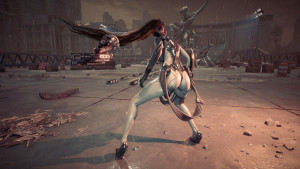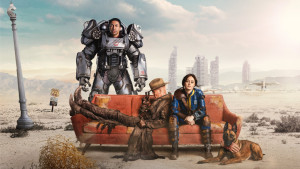Please support Game Informer. Print magazine subscriptions are less than $2 per issue
Ubisoft Talks Rainbow Six Siege Netcode, Clan Support, And Most Popular Operators

Rainbow Six Siege was one of the toughest review games I've had to score. While I absolutely love the intense competitive core of the multiplayer matches when both teams have strong communication and execution, the supporting content is sparse and server complications dampened my enthusiasm for the game. We recently discussed some of these issues with Siege creative director Xavier Marquis.
The Rainbow Six trajectory changed quite a bit when Ubisoft walked away from Patriots. What, if anything, was preserved from that project and used in Siege?
Back when the next-generation consoles were first announced in 2013, Ubisoft executive management and the core Rainbow Six development team decided that we would focus our efforts for Rainbow Six fully towards next-gen development. One of our tech groups at the time, the RealBlast team, created a prototype of the procedural destruction technology and we quickly realized its potential. This technology was still early on in development and not compatible with the vision of Rainbow Six Patriots. As a result, Ubisoft made the bold decision to cancel Patriots and hand over the development of the next Rainbow Six game to a fresh team with a new direction.
What was the primary motivation for abandoning a single-player campaign altogether? Were you worried about alienating longtime fans who have come to expect this component?
The decision was a result of our desire to focus on the deep replayability of the game's multiplayer and co-op modes. Ubisoft is known as an expert at making open-world games, but with Siege, our objective was to work on a completely different model, one built around the multiplayer experience. For the development team, foregoing a campaign was the best means to deliver the most engaging multiplayer experience possible.
One of Siege's biggest strengths is that all the maps are designed specifically for one multiplayer mode. Was this liberating for the design team to not have to make sure it works for DM, CTF, and all the other conventional modes that are traditionally tacked onto a multiplayer game?
We made the decision for all of the game modes to be derivatives of TDM in order to offer players the advantage of simple rules to follow so that whatever happens, when a player takes down another player, he or she is contributing to the global progression of the game's scenario. Eliminating the opposing team remains the game's core concept, while the placement of the hostage, bomb, or area that needs to be secured are all conditions that focus the siege on a specific location on the map.
This simplification makes it easier for the player to grasp the core concept of the game while also allowing them to put in the time to discover the complexity of Siege and the intricacies of each map, along with procedural destruction, unique operators, team communication, and friendly fire.
The sound design plays such an integral role in the matches, creating tension in anticipation of an attack. When in the development process did you determine that so much emphasis should be placed on the audio?
Audio was always a key area of emphasis for us from the onset of production. In Siege, you have to make tactical decisions using small scraps of information like audio cues that add to the tension in the game. This was the main reason we chose to focus so heavily on the sound and eliminate things like a mini-map which informs too quickly, too easily, and with too much comfort. We wanted the player to collect this information themselves. We wanted players to use audio in a realistic manner. For example, in real life, if you're woken up at night by a sound, the first sense that you trigger is your hearing, followed by vision. You maintain silence to hear better, keeping a sharp ear to pick up any information. Even before establishing visual contact, sound lets you anticipate, even verify the location of an enemy even if a wall or ceiling separates the both of you. This concept is what drove the audio design for the game.
Each operator has a unique strength, giving players several tactical choices, but players can't help but gravitate toward favorites. Who have been the most used operators thus far?
Our recent data indicates that Thermite, Fuze, and Ash are the top three selected attackers. Kapkan, Castle, and Rook are the top three selected defenders. Obviously, the metagame is still rather young and the way the community plays the game and the operators they choose will evolve along with the game.
Customization has traditionally been such a big part of the Rainbow Six multiplayer experience, letting players tweak everything from weapon loadouts to how much armor they choose to wear in battle. With the introduction of operators this clearly took a backseat. Was there a contentious debate about abandoning or minimizing the impact of one of the brand's signature elements?
We've had a lot of debates here internally on this topic and ultimately we decided to go with what I refer to as the "tactical choice." Each operator and their respective abilities represents a unique tactical choice and the option for only one player to select that certain operator on each team amplifies the importance of their choice.
We decided to put less emphasis on customization because we felt it led you to think too much about yourself and your own personal playstyle instead of the operators and their abilities. When you pick an operator before a round, you not only choose a specific playstyle, you also share this information with your team and tell them what's not available anymore. Choosing an operator is a first step towards communicating with your teammates. Operators are meant to create identifiable characters in the game and allow players to think in shared, yet precise, terms based on their characteristics.
After a player dies, they can still use the various cameras placed around the map and feed intel to their teammates. Why did you decide to give them such a powerful role after taking a fatal bullet?
In Siege, the team takes precedence over the individual. During an assault, the unit must become a team and support one another every second. We wanted players to keep influencing the match even after they died, tracking the targets and communicating information until the very end of a match.
Netcode is such a critical component to competitive multiplayer, and Siege shipped with some problems in that department like matchmaking errors, lag, and random disconnects. Given that multiplayer is the centerpiece of the game, in retrospect do you wish you held the beta earlier than a week before the game released so you could have spent more time on a fix?
As you mentioned, netcode is absolutely critical for a game like Siege. Many of us on the dev team are demanding players ourselves and knew from the start that the online experience would be of the utmost importance for the success of the game. There is something about a game being live that is both stressful and incredibly thrilling. We learn a great deal every day and it allows us to see issues more clearly as they are happening in live conditions.
The Open Beta revealed several issues that we fixed in the final game, but there were some issues that arose after launch that weren't possible to reproduce prior to the game's release, even in the betas. I am proud to say that we have a team of more than 100 people working on the live operations. For them, as for me, work really starts when the game has been released.
When do you hope to have all the network issues shored up?
This is a continuous process as we continue to optimize the online performance. We've been super busy after launch making constant adjustments, and based on both our monitoring tools and the community sentiment, we feel that we have greatly improved on network issues and are seeing large number of matches processed successfully each day.
Why did you decide to forgo clan support for a game that's so focused on teamplay? Do you have plans to integrate these features in the future?
Clan support is an element we are currently considering for implementation in the future. The future is bright for Rainbow Six Siege and we still have exciting new features in the works.
Players can't check out their global stats from the game menus and instead must go to the website to see their performance breakdowns. Why did you go this route?
The idea of tracking and sharing players' performance stats is important for us. Players usually take the time to check out their stats during down time whether they are in the game or not. We believe that the web is the best platform to showcase this detailed information and we decided to focus on delivering a solid web interface that works on both mobile and PC, though we are looking to provide more access to this information in the future.
You have clearly built this game to grow moving forward, with the promise of new maps, operators, modes and weapons that will be free to download or unlockable using in-game currency or real money. Can you offer any specifics about the next couple content drops?
We plan on having new major content updates every 3-4 months with regular title updates in between.










